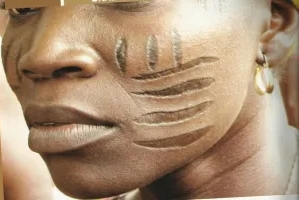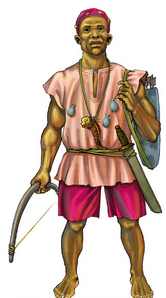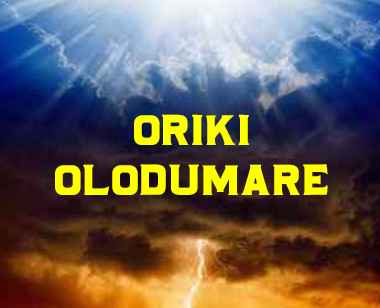
support@yorubalibrary.com
+2348073529208, 07038599574

Tribal marks are facial or body scarification that serves as permanent identifiers of lineage, family heritage, and social status within the Yoruba community. There are many reasons and different cultural importance attached to Tribal Marks in Yoruba Culture. Today, we will look at the history, types, patterns, and cultural importance of Ila Kiko in Yoruba culture.
IMPORTANCE OF TRIBAL MARKS
Tribal marks, known as Ila Kiko in Yoruba, have been practiced for centuries. They are more than just physical adornments; they are a form of identity, a symbol of belonging, and a way of preserving family heritage. In the past, tribal marks were used for a variety of purposes which include:
1. Identification:
Tribal marks helped identify individuals from specific families, towns, or regions. In a society where surnames were not always used, these marks served as a visual form of identification.
2. Beauty and Status:
In Yoruba culture, tribal marks were often seen as a sign of beauty and social status. This is why Yoruba people often make proverb that "Tita riro la n ko ila, ti o ba jina tan, a maa d'oge"
3. Spiritual Protection:
Some tribal marks were believed to have spiritual significance, offering protection against evil spirits or misfortune.
4. Rites of Passage:
The process of receiving tribal marks was often part of initiation rites, marking a person's transition into adulthood or acceptance into a particular group.
TYPES OF MARKS IN YORUBA CULTURE
There are various types of tribal marks in Yoruba culture, each associated with specific families, towns, or regions. These marks differ in their patterns, placement, and number of lines. Below are some of the most well-known types:
1. Abaja
• Characteristics:The Abaja marks consist of horizontal or vertical lines on the cheeks. They are one of the most common types of tribal marks.
• Patterns: The number of lines varies, with some families using three horizontal lines (Abaja Merin) or six vertical lines (Abaja Mefa).
• Families/Towns: The Abaja marks are associated with the Oyo people and are commonly found among the royal families of Oyo.
2. Pele
• Characteristics: The Pele marks consist of thin lines on the cheeks.
• Patterns: The Pele marks are often designed in a crescent shape or as a series of small, curved lines.
• Families/Towns: The Pele marks are associated with the Ijesha and Ekiti people.
3. Gombo
• Characteristics: The Gombo marks are vertical lines that extend from the top of the forehead down to the chin.
• Patterns: These marks are usually long and straight, covering a significant portion of the face.
• Families/Towns: The Gombo marks are common among the Hausa, Egbas and Owu people.
4. Ture
• Characteristics: The Ture marks are a combination of vertical and horizontal lines on the cheeks.
• Patterns: These marks often form a grid-like pattern.
• Families/Towns: The Ture marks are associated with the Ijebu people.
5. Keke
• Characteristics: The Keke marks are horizontal lines on the cheeks, often combined with other patterns.
• Patterns: These marks are usually bold and prominent.
• Families/Towns: The Keke marks are associated with the Ibadan people.
THE PROCESS OF MAKING TRIBAL MARKS
The process of Ila Kiko is both an art and a ritual. It is typically performed by a skilled practitioner known as an Oloola or Onila. The process involves the following steps:
1. Preparation: The skin is cleaned and prepared for the scarification process.
2. Incision: Using a sharp blade or knife, the practitioner carefully makes incisions on the skin according to the desired pattern.
3. Application of Herbs: After the incisions are made, herbal mixtures are applied to the wounds to promote healing and prevent infection.
4. Healing: The healing process can take several weeks, during which the scars form and become permanent.
The process is often accompanied by rituals and ceremonies, especially when the marks are given to children as part of their initiation into the family or community.
Ila Kiko remains an important part of Yoruba cultural heritage. Efforts are being made to preserve this tradition through art, literature, and cultural education. Many Yoruba people view tribal marks as a symbol of their ancestors' resilience and creativity, and they continue to honor this legacy in various ways.

Learn about the Yoruba concept of Ìwà Pẹ̀lẹ́ (good…

Learn special praises for Divine Being and Creator…